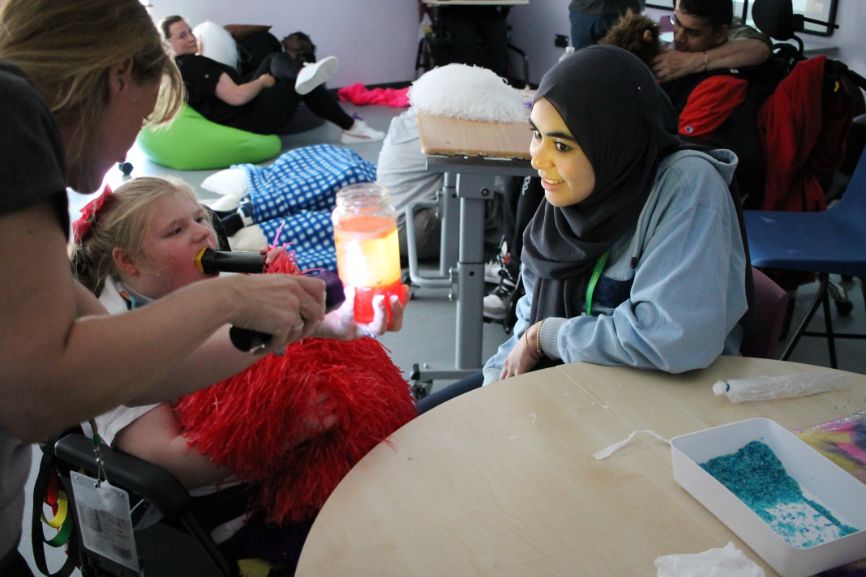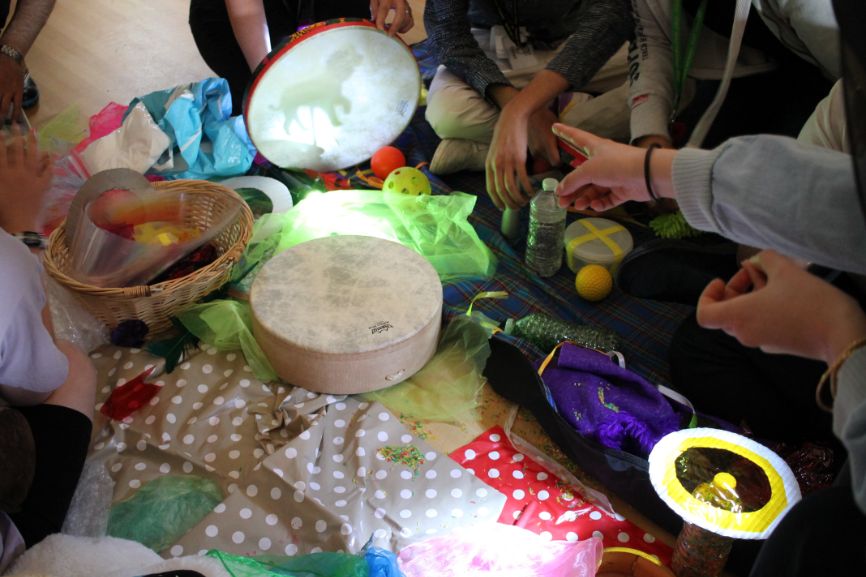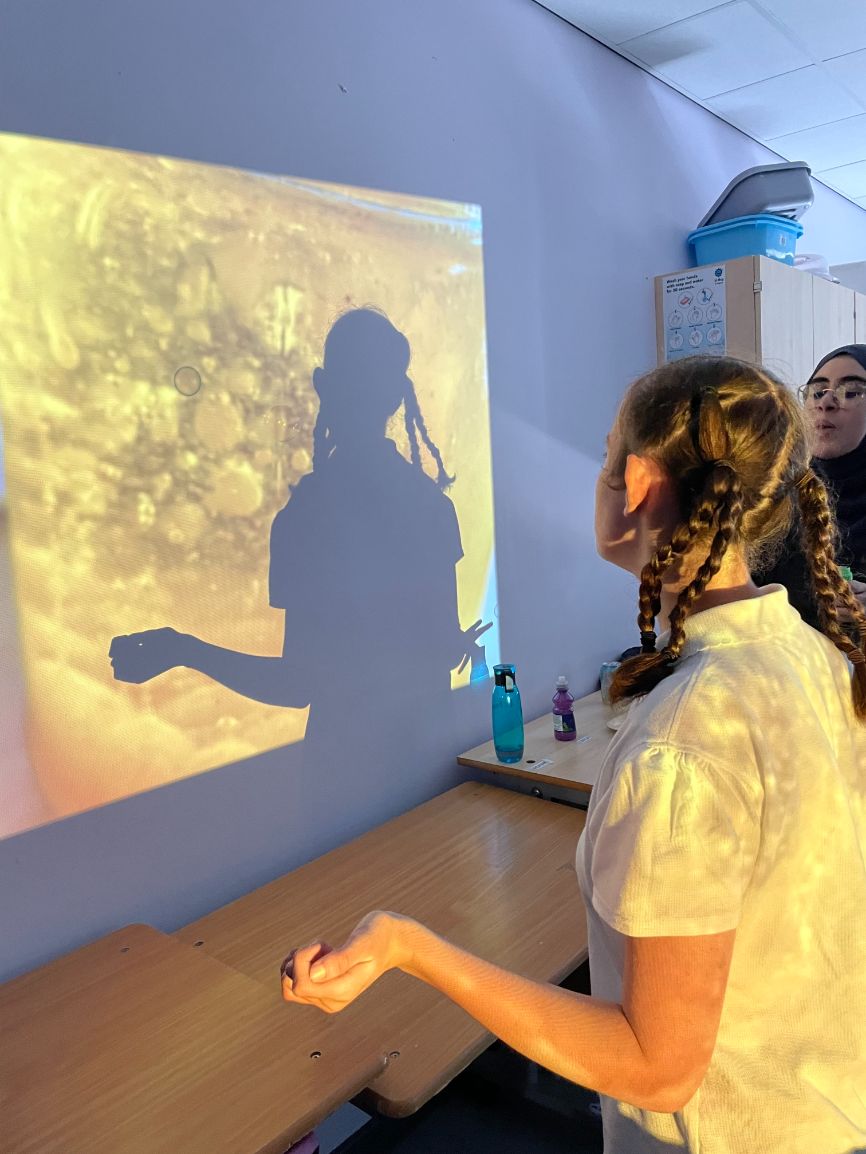Atelier Labs - exploring chemistry through art
Attenborough Arts Centre worked with Nether Hall School, artist Rachel Scanlon and University of Leicester chemistry student and outreach assistant Asmaa Abdalla to explore the teaching of chemistry through art.
By Bob Christer
Atelier Labs is a project that forms part of a five-year programme called SENsory Atelier, which works with nine SEND (special educational needs and disabilities) schools in Leicestershire. The initiative's purpose is to explore how art and creativity can develop foundational learning skills applicable to wider curricular areas.
Atelier Labs grew from the idea of using art to empower young people with SEND to become researchers, explore the world around them, make and test their own hypotheses and embed learning through tangible experiences.
This approach is heavily informed by the work of Reggio Children in northern Italy and Sightlines Initiative and House of Imagination here in the UK. It treats young people as collaborators in their own education, rather than empty vessels that need to be filled with knowledge.
We wanted to give disabled young people and those with special educational needs opportunities to engage with chemistry in a way that is not usually available to them, giving them real-world experiences of chemistry principles and interactions with a real chemist.

We applied to the Outreach Fund to enable us to add capacity to the SENsory Atelier programme to explore the mix of chemistry and art, and to expand our understanding of how utilising creative approaches can enable wider learning.
Atelier Labs was a huge success, working with three sixth-form classes at Nether Hall School, a higher-ability group of students, a mixed-ability class, and a PMLD (profound and multiple learning difficulties) group.
Artist Rachel and outreach assistant Asmaa developed a programme of provocations, which are starting points for learners to access at differentiated levels that tie into complex chemistry concepts. This approach often meant stripping back to our simplest starting point, and making chemical reactions visible to, or touchable by, the young people (for example, with self-inflating balloons with vinegar and bicarbonate of soda).
By using safe and accessible materials, we were able to give the young people agency to explore the materials in their own ways. They experimented with changing the amounts of ingredients used; filling balloons with other materials; and using sensory approaches, including light, touch, sound, and smell. This all made the reactions accessible, particularly for the PMLD learners that rely heavily on experiential learning.

Alongside this, we included information about the chemical reactions, including formulas, of what the young people were experiencing through their explorations, giving all an opportunity to access the highest level of information available.
The project couldn’t have happened without the Paul Hamlyn Foundation’s support of the wider SENsory Atelier programme, match funding from Arts Council England, the support of the Royal Society of Chemistry’s Outreach Fund, and the expertise and engagement of our collaborators, the staff at Nether Hall School, Rachel, Asmaa and the young people who brought their own experiences and skills to enable their learning.
Atelier Labs has also enabled us to develop the capacity of teaching staff to further embed chemistry and science within the school through creative and sensory approaches. The project inspired the production of a free toolkit aimed at teachers and educators as a legacy sharing of both practical ideas generated, and the principles underpinning the ethos of our approach.
For more information on the SENsory Atelier programme, visit unlockingtheworldblog.com.
To download a free copy of the Atelier Labs toolkit, click here. To watch a video documenting the activities at Nether Hall School, click here.
